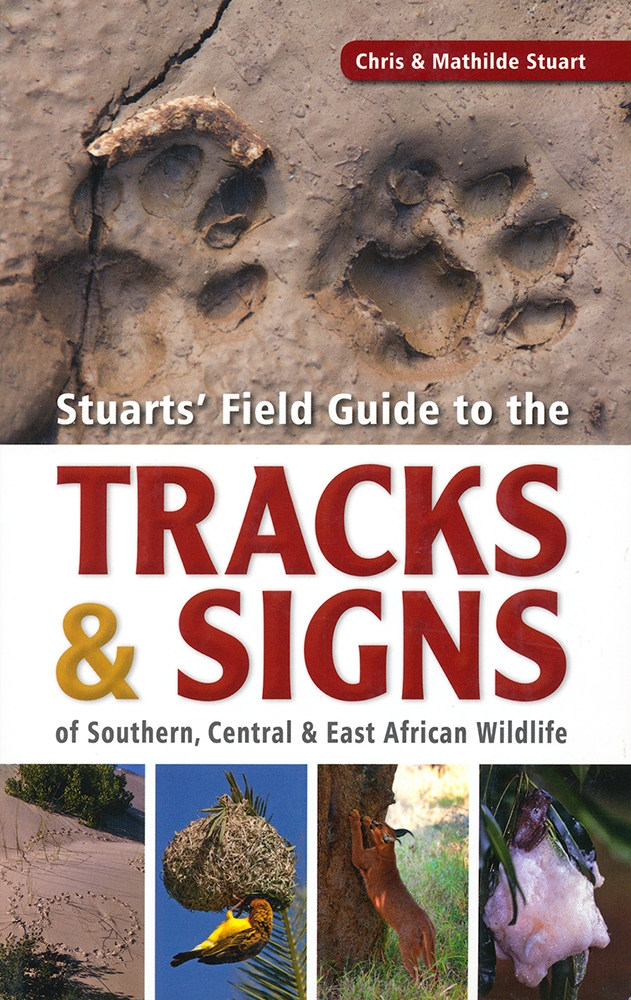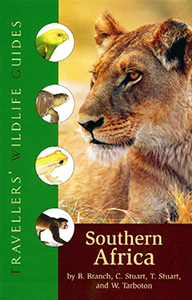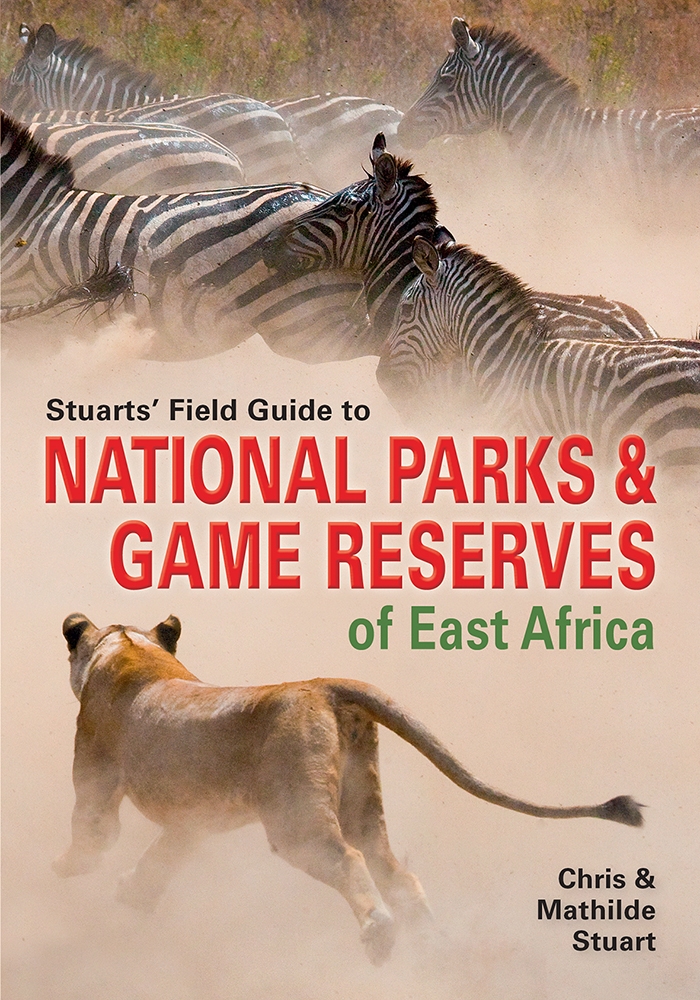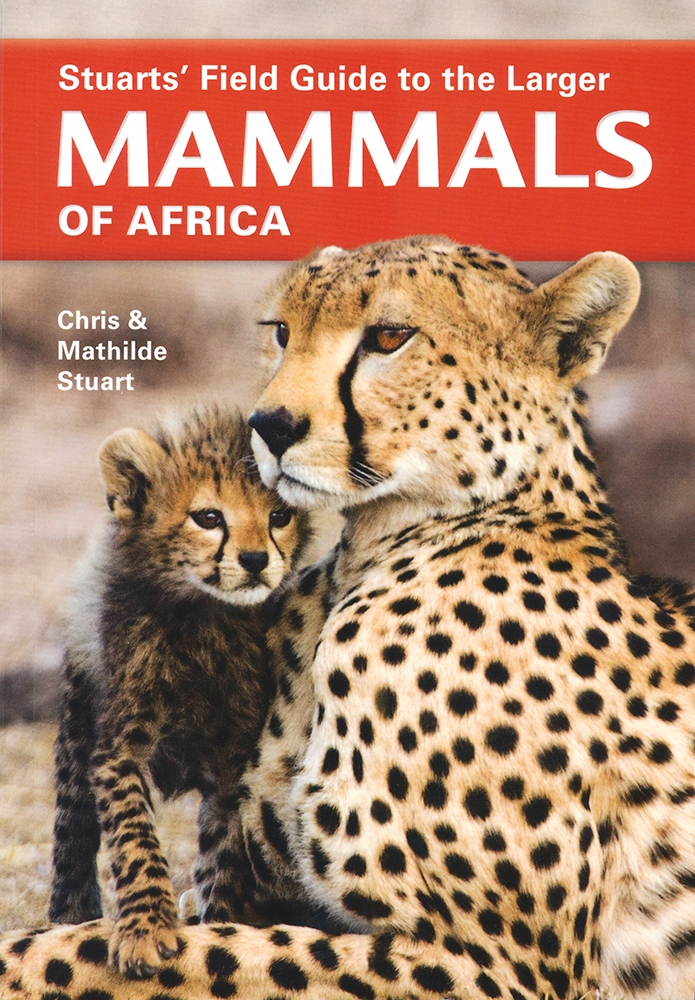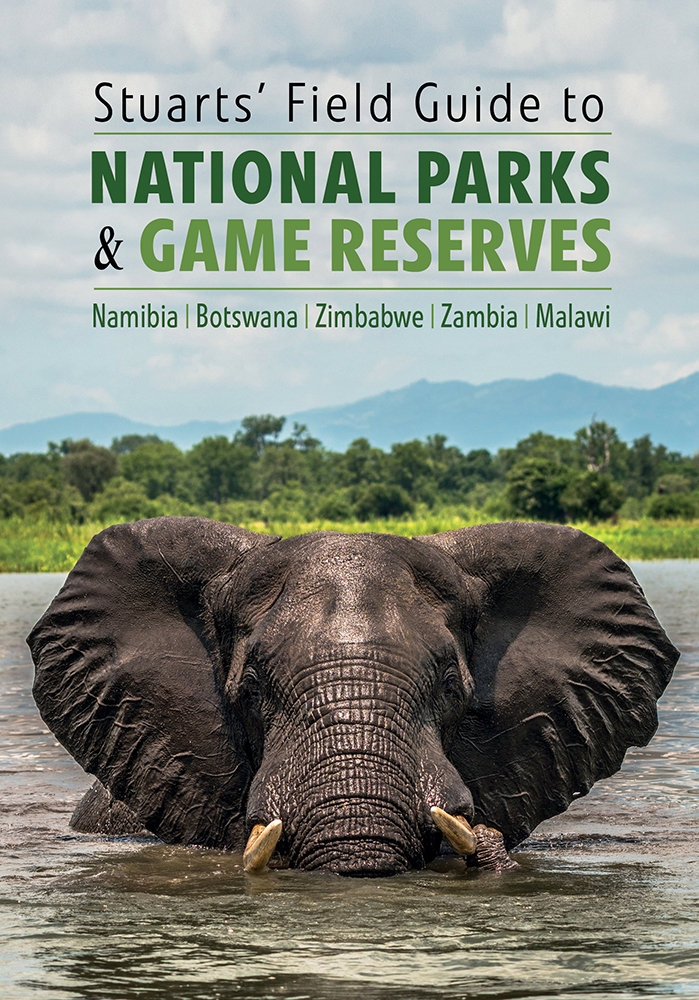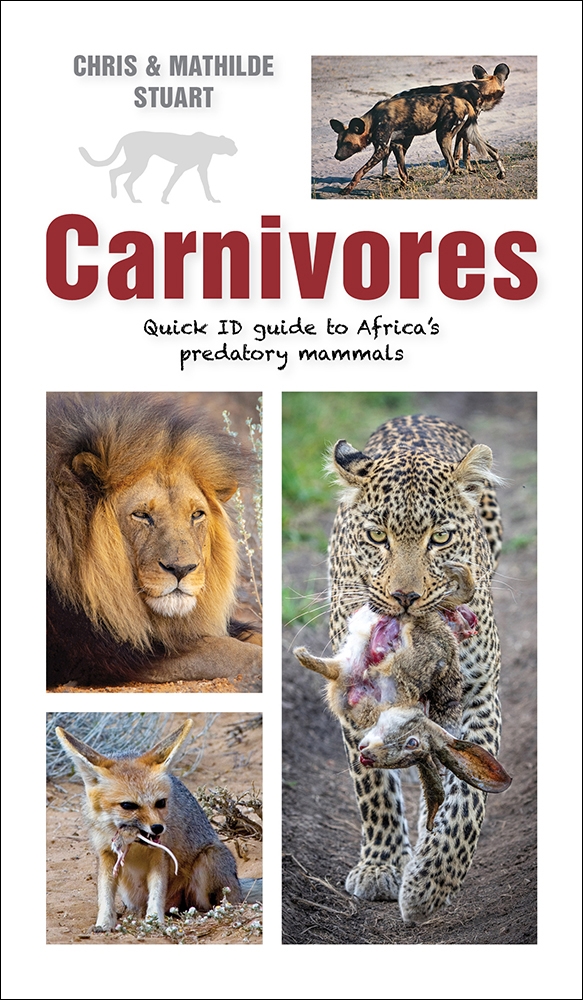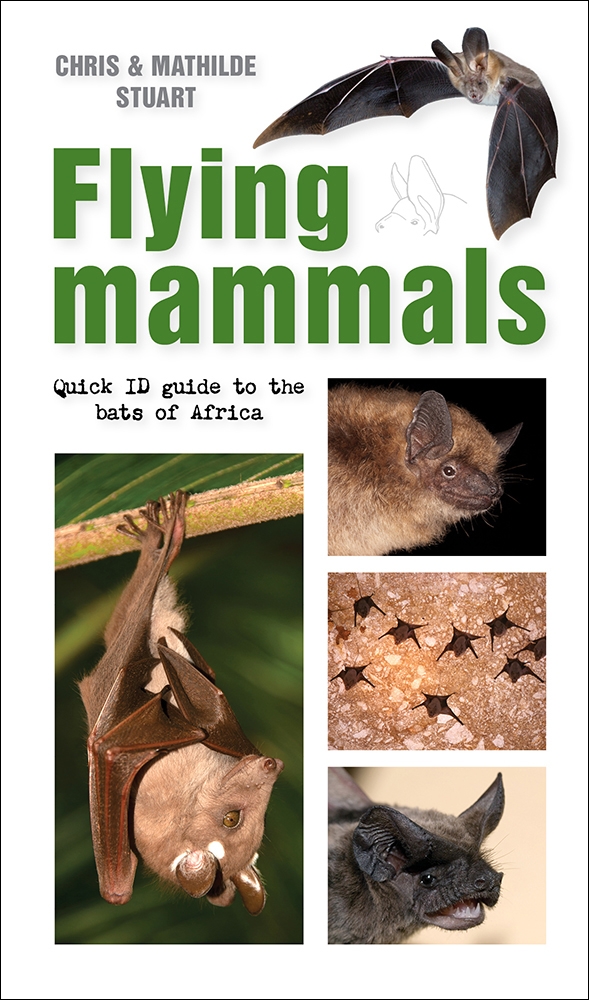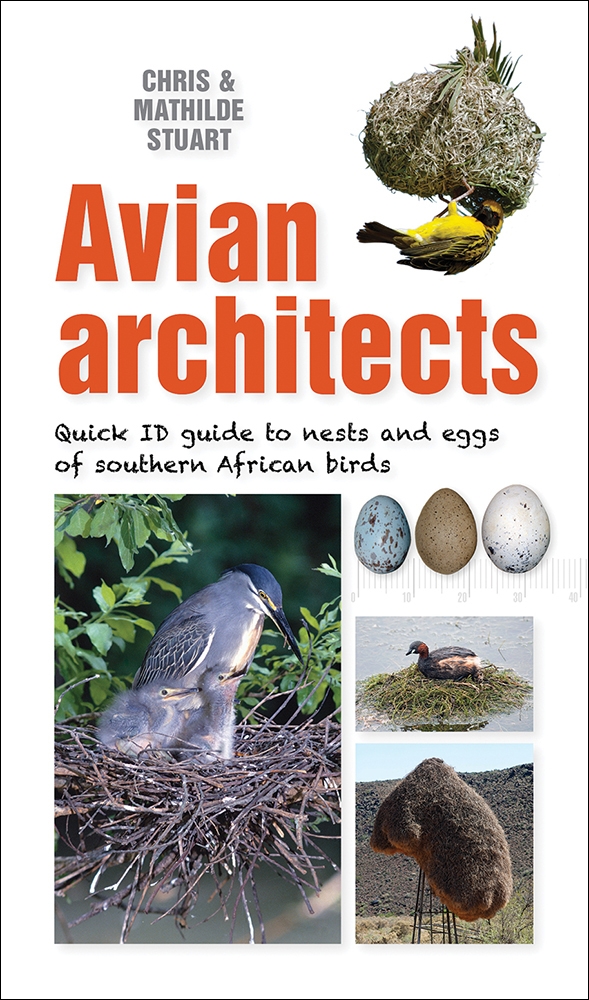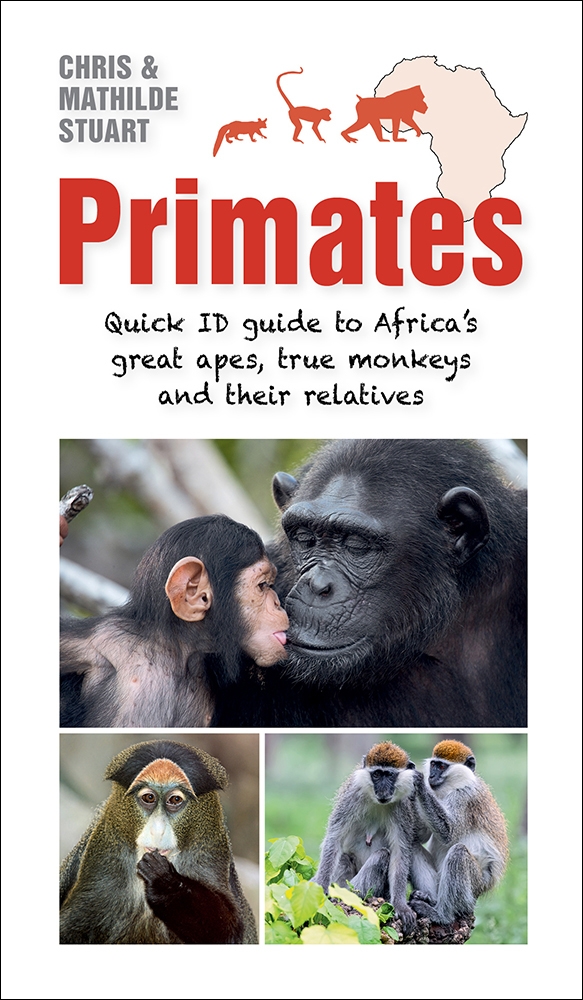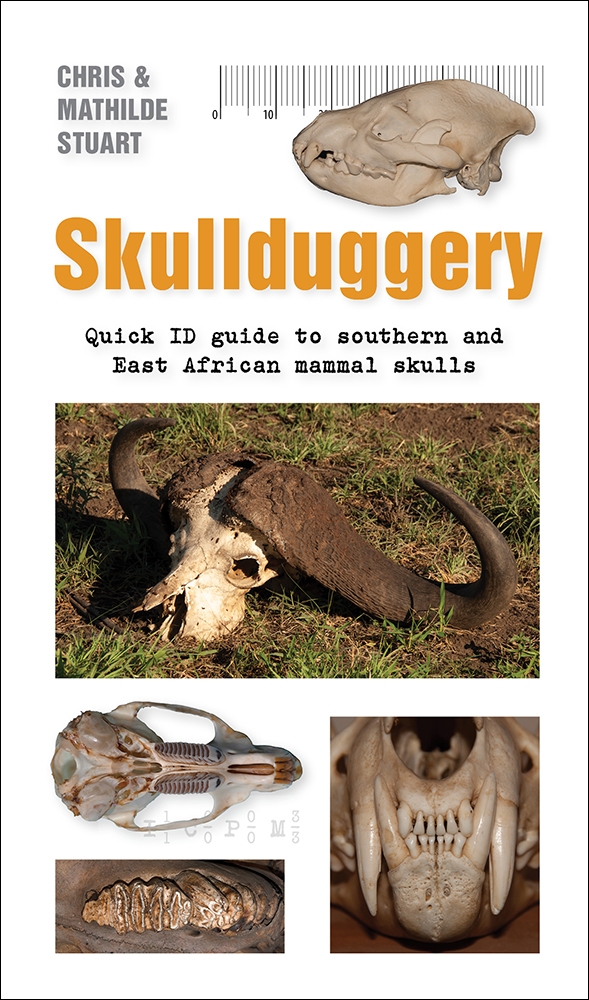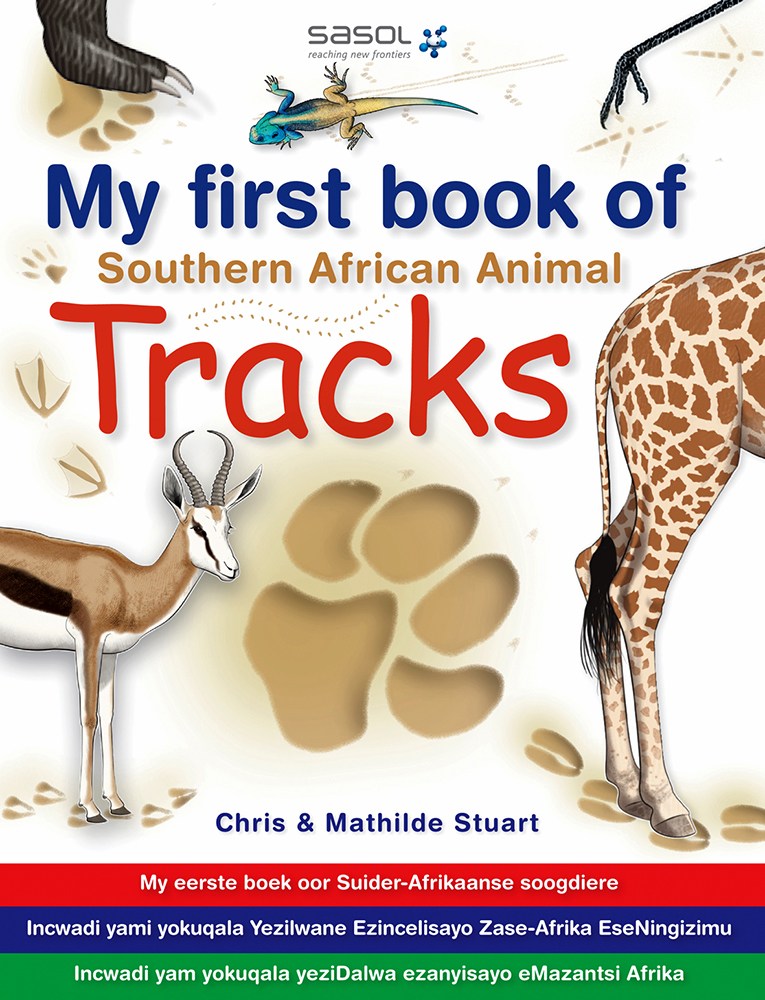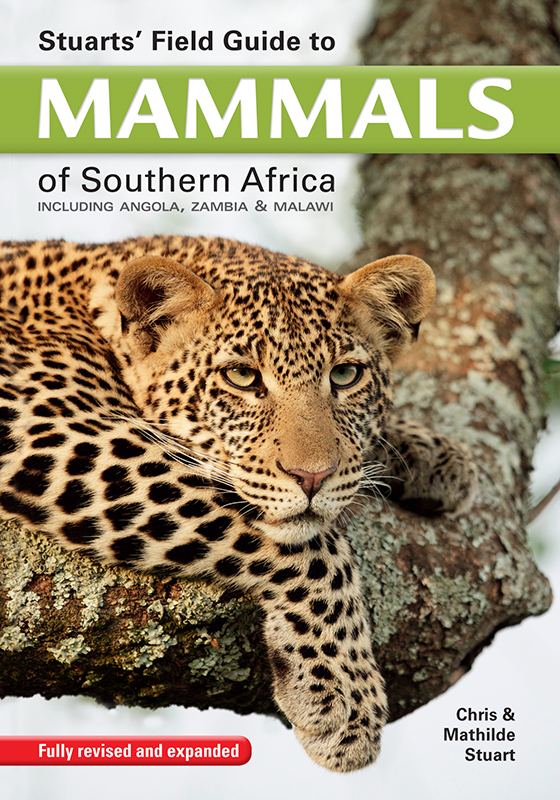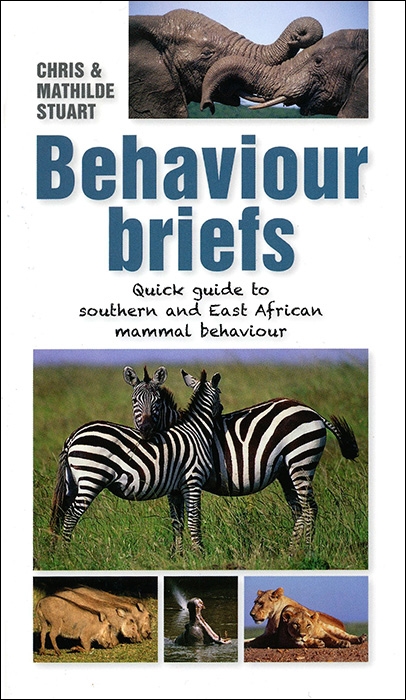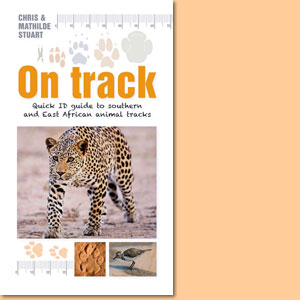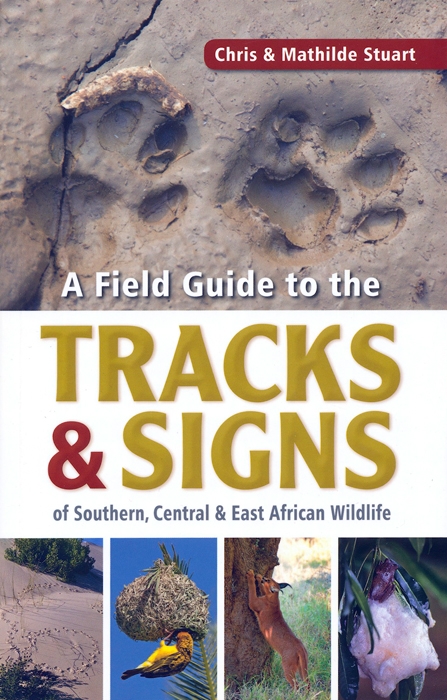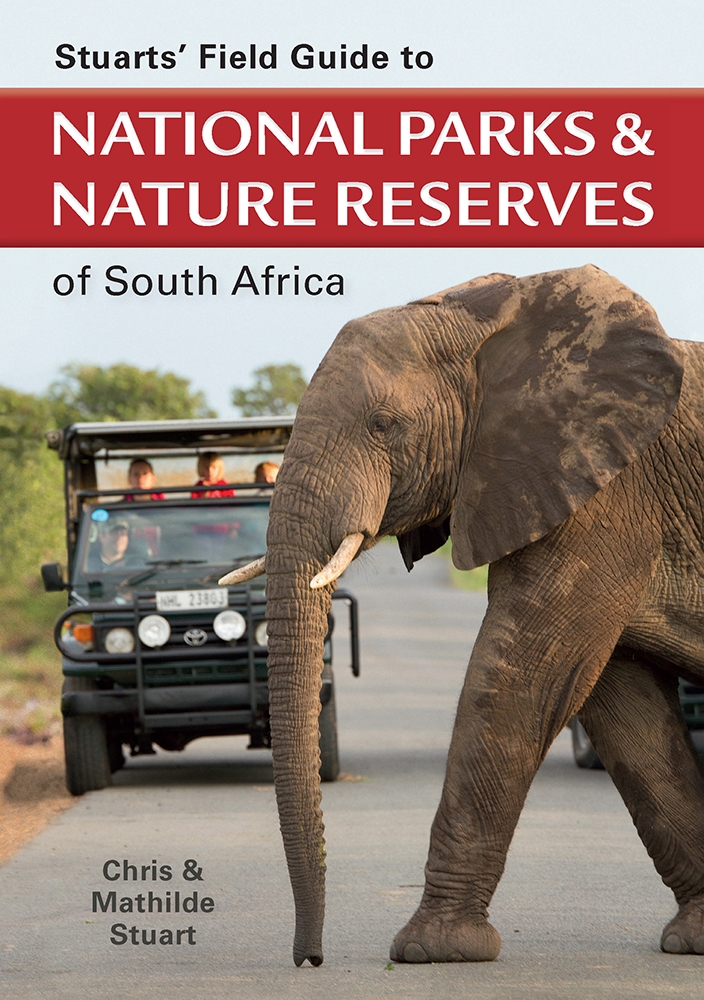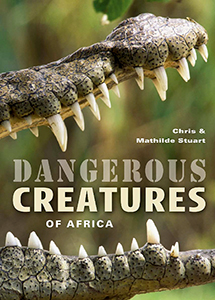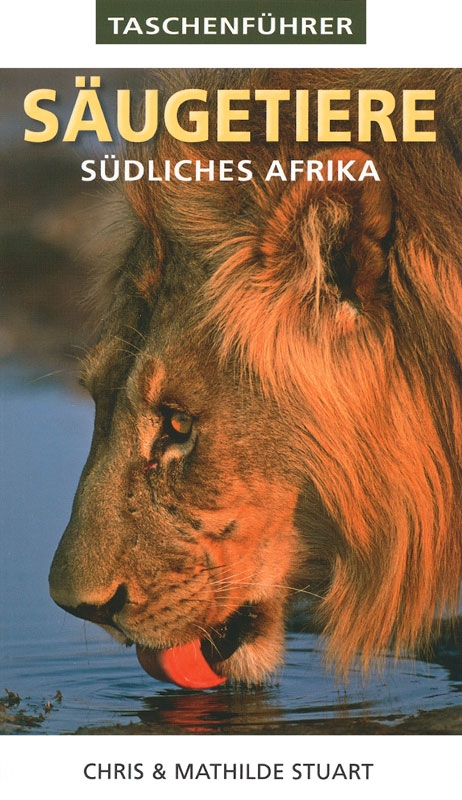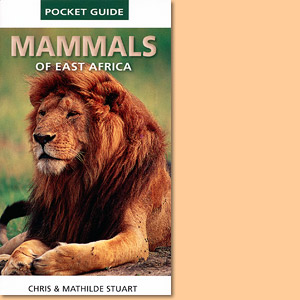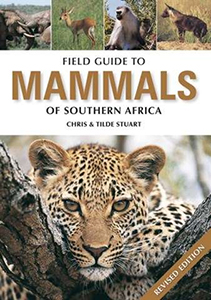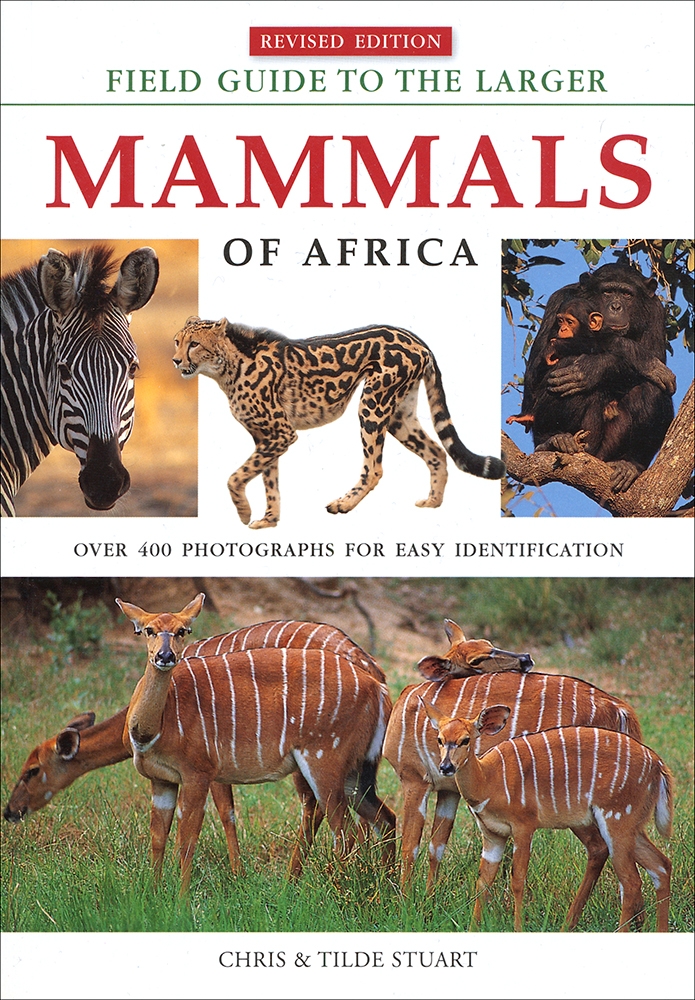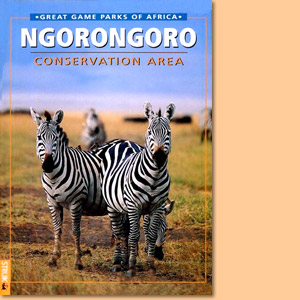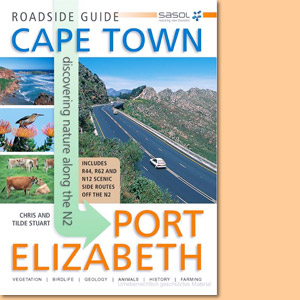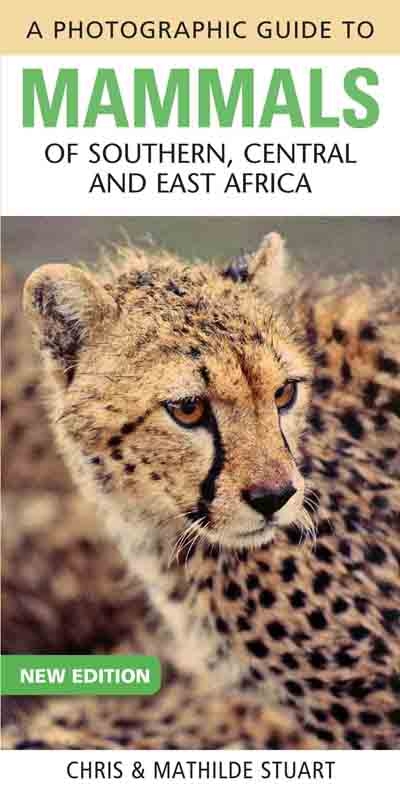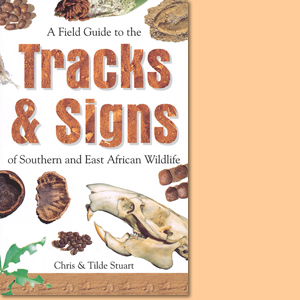Stuarts' Field Guide to the Tracks & Signs of Southern, Central and East African Wildlife, by Chris and Tilde Stuart.
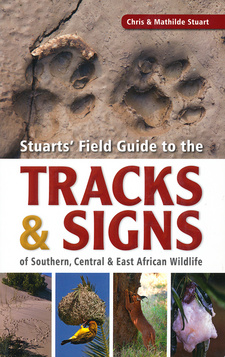
Stuarts' Field Guide to the Tracks & Signs of Southern, Central and East African Wildlife, by Chris and Tilde Stuart. Penguin Random House South Africa. Imprint: Struik Nature. Cape Town, South Africa 2019. ISBN 9781775846925 / ISBN 978-1-77-584692-5
Sometimes it is not immediately obvious what type of animal left a particular track or dropping: was it a bird, a reptile, a mammal, an invertebrate? Stuarts' Field Guide to the Tracks & Signs of Southern, Central and East African Wildlife by Chris and Tilde Stuart is unique in its approach: rather than listing animals in taxonomic order along with their tracks and signs, it allows you to navigate quickly via a series of keys to arrive at the correct animal group or species.
Identifying tracks
The following steps will help you to identify the species that left a particular track: Look at the shape of your track and refer to the Quick reference - tracks on the inside front cover. This key divides tracks into broad groups based on easily observable features including shape and size. Alternatively, you can begin with the General key to tracks in Chapter One, p. 24. Once you've established the group, turn to the specific key for that group, which allows you to compare the relative proportions of similar-looking tracks and will refer you on to individual species accounts. Where possible, species that occur in close association and that are easily confused are grouped together in the group keys and accompanying accounts. Depending on the available information, each account provides a description, track sketches, measurements and photographs of the animal's tracks under different conditions, all of which will help you to confirm the identity of your track. The track sketches show an 'ideal' track, and, wherever possible, are accompanied by photographs of the tracks as you are most likely to see them. Photographs of the feet themselves are included, where this may be helpful. Except where otherwise indicated, the lengths given in species accounts are averages without the claws, based on measurements from hundreds of tracks and, where relevant, additional measurements, such as greatest width, main pad size and claw length, are also included. For the general keys one particular track has been used as the base for each illustration, which is why specific measurements are listed there.
Identifying droppings or dung
To identify droppings or dung: Look at the shape of the dung sample you wish to identify and refer to Quick reference - droppings on p. 1 or to the more detailed General key to droppings in ChapterTwo, p. 236.These keys divide droppings into groups based on their form. Once you've decided into which broad group your sample seems to fall, turn to the description for that group and look at the accompanying photographs. If the General key to droppings refers you to the antelope, go to the Key to antelope dung pellets on p. 248, and check the individual species descriptions and photographs. Bear in mind that tracks differ depending on an animal's habitat and living conditions. For example, a population of antelope living in a sandy region may evolve longer hooves than is typical of the species elsewhere. Likewise, a foot may splay in sand or mud to provide the animal with better purchase.The Great Dane that left the track shown on p. 18 had slipped in the mud, leaving a totally distorted impression of its foot. A track in firm damp silt will usually be clear and will accurately portray the animal's foot structure, but if the same individual steps on loose sand the chances of correct identification are greatly reduced. For this reason it is always a good idea to follow a trail until you find a clear track. Remember that the tracks of members of the same species can show considerable variation.This may reflect the age composition of a population (since young animals leave smaller tracks), differences between individuals, or the influence of the substrate. [...]
This is an excerpt from Stuarts' Field Guide to the Tracks & Signs of Southern, Central and East African Wildlife, by Chris and Tilde Stuart.
Title: Stuarts' Field Guide to the Tracks & Signs of Southern, Central and East African Wildlife
Author: Chris and Tilde Stuart
Publisher: Penguin Random House South Africa
Imprint: Struik Nature
5th edition. Cape Town, South Africa 2019
ISBN 9781775846925 / ISBN 978-1-77-584692-5
Softcover, 14 x 21 cm, 488 pages, throughout colour photos and images
Stuart, Chris und Stuart, Tilde im Namibiana-Buchangebot
Stuarts' Field Guide to the Tracks & Signs of Southern, Central and East African Wildlife
Stuarts' Field Guide to the Tracks & Signs of Southern, Central and East African Wildlife, this is the 5th revised edition.
Traveller's Wildlife Guide Southern Africa
Traveller's Wildlife Guide Southern Africa introduces 500 of Southern Africa’s most common amphibians, reptiles, birds, and mammals.
Stuart's Field Guide to National Parks and Game Reserves of East Africa
Stuart's Field Guide to National Parks and Game Reserves of East Africa provides an overview of some 58 protected areas across East Africa.
Stuarts’ Field Guide to the Larger Mammals of Africa
Stuarts’ Field Guide to the Larger Mammals of Africa concentrates on the more visible and easily distinguished larger species.
Stuarts' Field Guide to National Parks and Nature Reserves of Namibia, Botswana, Zimbabwe and Zambia
Stuarts' Field Guide to National Parks and Nature Reserves of Namibia, Botswana, Zimbabwe and Zambia.
Carnivores: Quick ID guide to Africa's predatory mammals
Carnivores: Quick ID guide is a compact and quick ID identification guide to Africa's predatory mammals.
Flying Mammals Quick ID guide to the bats of Africa
Flying Mammals Quick ID is a compact and quick ID identification guide to the bats of Africa.
Avian Architects: Quick ID guide to nests and eggs of southern African birds
Avian Architects: Quick ID is a compact and quick ID identification guide to nests and eggs of southern African birds.
Primates: Quick ID guide to Africa's great apes, true monkeys and their relatives
Primates Quick ID is a compact and quick ID identification guide to Africa's great apes, true monkeys and their relatives.
Skullduggery: Quick ID guide to southern and East African mammal skulls
Skullduggery is a compact and quick ID identification guide to skulls of southern and East African mammals.
My first book of Southern African animal tracks
My first book of Southern African Animal Tracks introduces 55 different types of animals and their footprints.
Stuarts' Field Guide to Mammals of Southern Africa
Stuart's Field Guide to Mammals of Southern Africa covers near to 400 mammal species including Angola, Zambia and Malawi since the 5th edition of 2015.
Behaviour briefs: Quick guide to southern and East African animal behaviour
Why do they do that and what next? Behaviour briefs is a quick guide to southern and East African animal behaviour.
On Track: Quick ID Guide to Southern and East African Animal Tracks
On Track is a quick identification guide to tracks of Southern and East African most commonly found mammals, reptiles, rodents, birds and insects.
A Field Guide to the Tracks & Signs of Southern, Central and East African Wildlife
Latest edition of A Field Guide to the Tracks & Signs of Southern, Central and East African Wildlife.
Stuarts' Field Guide to National Parks and Nature Reserves of South Africa
Stuarts' Field Guide to National Parks and Nature Reserves of South Africa offers a comprehensive overview of 43 parks, reserves and wilderness areas.
Dangerous creatures of Africa
The focus of Dangerous creatures of Africa is on understanding, identifying, avoiding and surviving these potential hazards of the African wilds.
Taschenführer: Säugetiere, Südliches Afrika
Der Taschenführer Säugetiere: Südliches Afrika, legt seinen Schwerpunkt auf die größeren, öfter gesehenen Tierarten, schließt allerdings auch einige ungewöhnliche Arten ein.
Mammals Of East Africa Pocket Guide
Mammals Of East Africa Pocket Guide covers all of the common and some of the less common mammal species.
Mammals of Southern Africa Pocket Guide
Authoritative and colourfully illustrated, Mammals of Southern Africa Pocket Guide offers concise information.
Field Guide to Mammals of Southern Africa
A total of 337 species are covered in this fully revised comprehensive field guide to mammals of Southern Africa.
Field Guide to the Larger Mammals of Africa
Field Guide to the Larger Mammals of Africa provides over 400 colour photos, with concise, pertinent information highlighting the diagnostic features of each species.
Ngorongoro Conservation Area
From the series 'Great Game Parks of Africa' this is a portrait of the Ngorongoro Conservation Area.
Sasol Roadside Guide. Cape Town-Port Elizabeth: Discovering Nature Along the N2
The Sasol Roadside Guide Cape Town-Port Elizabeth: Discovering Nature Along the N2 interprets the surrounding countryside - plants, birds, mammals, reptiles, agriculture, geology.
A Photographic Guide to Mammals of Southern, Central and East Africa
A Photographic Guide to Mammals of Southern, Central and East Africa introduces 152 mammal species of each family group.
Field Guide to Tracks and Signs of Southern and East African Wildlife
Related to Southern African and East African Wildlife, this great field guide is about their tracks and signs, like droppings, feeding signs, scent marks and others.

